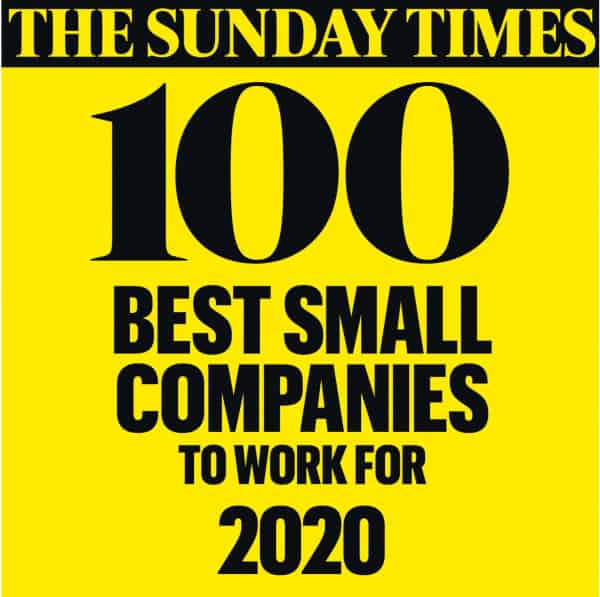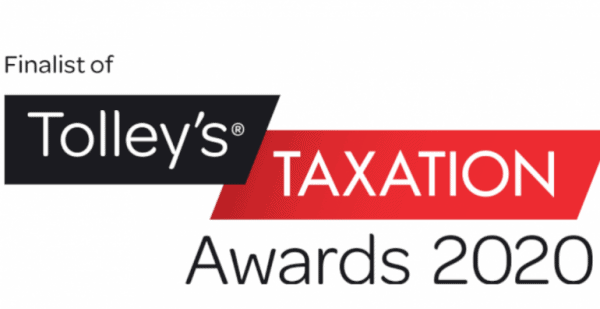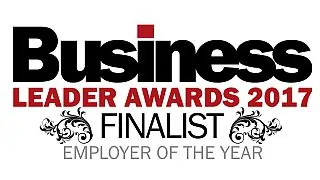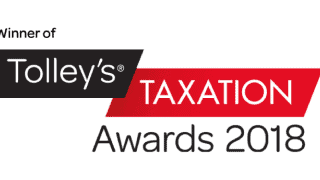Software R&D claim review
With HMRC scrutiny on software R&D at an all-time high, how confident are you in your claim? Get in touch with James Dudbridge for a comprehensive review of your claiming methodology.
- Telephone
- 0117 926 9022
Qualifying R&D in the software sector
Software development is an area of intensive R&D – both within software companies and for businesses developing software internally as part of wider transformation projects. Qualifying R&D in software can be found across those operating in AI, cybersecurity, Big Data, FinTech, as well as agency software.
Whether you’re writing, modifying, and testing software or designing systems that use hardware and software combined, our expert teams will help define project boundaries and identify all qualifying R&D costs. If proposed government changes to the incentive go ahead then cloud storage costs will also qualify for R&D tax relief. ForrestBrown has a proven track record of adapting to the latest guidance and operating at the leading edge of policy development.
Examples of R&D in software development include:
AI
- Using computer vision techniques to process, interpret and make decisions based on image or video input.
- Categorisation and segmentation of large complex or variable datasets using machine learning techniques.
Cybersecurity
- Developing tools and frameworks to analyse complex technology environments for potential threats and weaknesses.
- Developing new biometric authentication tools.
Back-end development
- Extending existing technologies or frameworks beyond their capabilities, such as CRM systems or JavaScript frameworks.
- Integrating legacy systems with a custom API.
- Developing novel data structures or data manipulation processes.
Fintech
- Developing complex cross-border remittance systems.
- Developing technology that underpins investment in companies not large enough to be traded on the stock exchange.
- Automation of customer-facing and back-office operations and use of blockchain or DLT.

Tom Heslin MSc
Associate Director
- hello@forrestbrown.co.uk
- Phone
- 0117 926 9022
- Leads our sector specialist team.
- Expert on software guidance for R&D tax relief.
- Master’s in Medical Image Computing.
Software advice tailored to you
Want to be sure that all of your software R&D is being rewarded? Arrange a consultation with Tom Heslin or a member of his software-sector team today to make sure you’re getting maximum value.
Spotlight on DeepTech
DeepTech is one of the most exciting areas in the UK’s software industry. Investment has soared in this space as DeepTech companies continue to push boundaries in everything from quantum computing to AI and robotics.
As advances are made in DeepTech, they inspire developments across many fields, impacting IoT, medical devices, autonomous systems, clean tech, and cybersecurity as just some examples. ForrestBrown are excited to be supporting DeepTech businesses in using the R&D incentive to fund their explorations into an increasingly diverse range of application areas.
Digital transformation & internal software R&D
Digital transformation projects are becoming increasingly common as businesses modernise to overcome current and future challenges. At ForrestBrown, we’ve found that many businesses aren’t aware of the full scope of opportunity available around R&D tax relief for your internal software projects. Here are some examples of qualifying R&D for in-house software:
- Developing or modifying control system software to improve production processes.
- Creating AI software to make business efficiencies.
- Creating a new software platform for managing workflow.
- Adapting and improving existing technologies to suit the particular needs of the business.
Our approach
-
Getting to know you
Before we can help you, our team of software specialists and qualified accountants take the time to understand your business goals and challenges. From here, we can confidently identify the type of support that adds the most value to you.
-
Advice tailored to you
Whether you need help with a specific challenge, like an HMRC enquiry or claim review, or want us to support you for the entire claiming process, we flex our service based on your needs. Tailored to you, the advice you receive is built on our tried-and-tested methodology, ensuring our value is consistent, clear and flexible.
-
Seeing the impact
Equipped with market-leading advice, you can feel confident that your R&D claim uncovers the full value of your innovation whilst being protected from risk. Once you’ve received your benefit, you can go on to fuel your business growth, whether that’s by investing in new talent or funding an ambitious project.
-
Planning for the future
At ForrestBrown, we invest in your business for the long-term. With the right advice, R&D tax incentives have the potential to transform your business. That’s why we continue to help your business achieve the full benefit that your innovation deserves year-on-year.
Software companies we’ve worked with
We are the preferred choice for many of the UK’s leading software houses, from cutting edge SaaS businesses to Big Data companies. Recognised for our technical prowess and deep sector knowledge, we’ve been able to match their ambitions and help fuel their growth. This includes growing in-house claims to transforming the impact of Big 4 claims, servicing large companies to disruptive start-ups, our experience is unrivalled:
Christine Pattison, Director, CIMPA PLM Services
After going through the claiming process for the first time we were delighted to learn just how much we were able to recoup. The funding has made a real impact on our business, enabling us to reinvest in our projects and push our R&D even further.
R&D in software

ForrestBrown advised us on what we could and couldn’t claim for. The other adviser didn’t add any value. They would ask us technical questions about apportioning costs, for example. Whereas ForrestBrown handled all that for us.
Paul Wickers, CEO, Huggg
A blockchain specialist
This blockchain specialist redeveloped an existing blockchain platform to provide additional functionality for use in healthcare. After extensive customisation of an off-the-shelf product the team were able to recoup over £194,000.
Dan Hodges, Finance Director, NCC Group
We were previously working with one of the big four, but after hearing about ForrestBrown’s expertise in cybersecurity we thought their strong knowledge of our industry might add additional value. We have a strong reputation to uphold, so it’s important to us that our claims are in the best hands.
Head of Finance, Azimo
We were quickly reassured by ForrestBrown who immediately put together a very senior and specialist team to resolve the enquiry and handle all communications with HMRC. Their insight into HMRC’s processes and protocols enabled them to negotiate effectively on our behalf.
Google review
What sets ForrestBrown apart is the breadth and depth of their expertise: this enabled them to understand our business and our technology challenges in detail very quickly, which in turn made the engagement process very efficient for our busy team.
A logistics provider
This cold-storage logistics specialist set out to create a software solution to track the movement of perishable items against flight times. For their innovative work, they recouped over £65,000.
A gaming developer
This video game developer created anti-cheat technology to detect when a gamer is using software to enhance their performance. Their team of developers had to iteratively rewrite the existing technology to make the software suitable, recouping over £90,500 for this work.
Tom Burnell-Nugent, COO, Doctify
ForrestBrown goes beyond the conventional tax consultancy approach, to be hands on, helpful and consultative, whilst also being aware of how time poor Doctify can be. With their efficient and seamless end-to-end handling of our R&D claims, they have proven to be a superb partner.
Meet our software R&D experts – assembling the best team
Our software sector specialists offer unparalleled insight into your R&D, drawing upon relevant industry experience across the entire software ecosphere. This includes cloud technology, games programming, big data, AI, databases and IoT.
Tom Heslin leads the software team at ForrestBrown and was part of the HMRC sub-committee that created the updated software guidance. He has a deep understanding of image processing techniques, applying mathematical and statistical formulae to large datasets and machine learning.
Our software experts work closely with our chartered tax advisers, accountants, and former HMRC inspectors to prepare your claim and analyse your costs. With HMRC scrutiny into software claims at an all-time high, our work is always checked by an in-house Quality Assurance team to mitigate the risk of a software R&D tax enquiry.

Tom Heslin MSc
Associate Director
Tom Heslin MSc
Associate Director
- Leads our sector specialist team.
- Expert on software guidance for R&D tax relief.
- Master’s in Medical Image Computing.
Expertise & specialisms
- Communication of highly technical R&D claims
- Extensive knowledge of software design
- HMRC software guidance
Tom is a software expert at the cutting-edge of technical innovation and HMRC policy. One of our sector specialists at ForrestBrown, his knowledge and experience is invaluable in optimising software claims.
He sat on the HMRC subcommittee that issues software guidance for R&D tax relief. As such, the team utilises his extensive expertise to ensure we deliver robust and accurate advice to our clients.
With a Master’s degree in Medical Image Computing from University College London, Tom has a deep understanding of image processing techniques. He can apply mathematical and statistical formulae to large datasets and machine learning.
Tom also has experience and knowledge of common software design patterns. Specifically, MATLAB, C#, C++, Python, R!, JavaScript, HTML, SQL, SSRS.
On top of extensive experience in the R&D tax relief industry, Tom has held a range of technical positions spanning various industries. In e-learning he engineered tools to aid international broadcast of lectures. In medical technology he helped develop an online CBT tool to help manage unhealthy lifestyle habits.
Tom also uses his industry insight to improve the future of R&D tax reliefs for the software industry. Not only does he work with our clients to represent their views in response to R&D consultations, he also communicates key information to our clients on technical webinars and in key content such as his work in IT Pro Portal, Tech Monitor, SME Web and Business Leader publications.
Working with the FB Consulting team, Tom brings this experience to tax disputes involving complex software development. He is able to express highly technical R&D claims in a clear and compelling way and is passionate about helping science and technology firms optimise their funding to drive innovation.

Tree MA FBCS
Senior Sector Specialist
Tree MA FBCS
Senior Sector Specialist
- Software, electronics and physical sciences specialist.
- Former CTO with 30 years’ experience in high-tech businesses.
- MA in Physics from Cambridge University.
Expertise & specialisms
- Software
- Video streaming and media processing
- Artificial intelligence
- IoT technology
- Databases
Tree has been at the forefront of tech for more than two decades. His expertise spans computer game design, digital music, databases, cloud services, artificial intelligence, psychological assessments and IoT technology. He also has a degree in Physics from the University of Cambridge.
Tree’s career started with a game programmer role, developing high-profile games for the original Sony Playstation. Since then, he has worked with cutting-edge tech startups.
Familiar with a wide range of programming languages including JavaScript, PHP, assembly language, Python, Java and C#, Tree has also led software development as manager, VP and CTO at a number of tech companies.
Two notable projects Tree has worked on include writing the first open source cross-platfrom library for beacons for iOS and Android, and writing GPU-based server software to convert video and images in real time for hexagonal pixel displays.
Tree brings his background as a CTO to support our associations in the software and hardware space. Speaking on webinars, writing content (such as his published article in IT Pro Portal) and speaking to association members, Tree helps businesses to identify how they can make efficiencies when placing technology claims.
Possessing a combination of technical flair and business acumen, Tree has a passion for helping tech firms innovate and grow. He has witnessed firsthand the impact that R&D tax reliefs can have on growing an innovative team. After joining ForrestBrown in 2019, he has been able to channel his knowledge and creativity to help our digital technology clients maximise their funding from R&D tax relief and worked on a number of responses to government consultations regarding the future of the tax relief.

Ben Wyatt LLB
Senior Sector Specialist
Ben Wyatt LLB
Senior Sector Specialist
- Expert in a huge range of developer and cloud technologies.
- 15 years of agency experience working across many sectors.
- A dedicated resource at ForrestBrown for uncovering digital innovation.
Expertise & specialisms
- Web design and development
- Cloud technologies
- Digital awareness
- UK law
Ben is a digital expert at the forefront of tech trends. A digital sector specialist at ForrestBrown, his extensive knowledge is invaluable to our clients who are pushing the boundaries of innovation.
He began his career as a law and philosophy graduate in publishing, but quickly developed a keen interest in web design and build. At the time he worked for family law publishing house Jordan Publishing, but he moved from there into the world of digital agencies.
Ben has amassed more than 15 years of digital agency experience since then, some at general agencies; others specialising in sectors such as travel and product development. These include 3Sixty, Bray Leino, Zone and Potato.
With experience as a front and back-end developer, senior developer and technology director, Ben has mastered a host of technologies. He is Sitecore certified and has worked extensively with Episerver, Umbraco, HTML, CSS, Javascript, responsive design and Microsoft.Net.
Ben has also developed expertise in AWS, Azure and Google Cloud as cloud technology has emerged. In his senior roles he has led teams of developers and been involved in wider business management.
His extensive experience at agencies has led him to work across many sectors, including legal, transport infrastructure and entertainment. Past projects include internal tools such as events planning platforms and interactive gaming that utilises augmented reality.
Ben’s expertise is tremendously valuable to our clients at the cutting edge of digital innovation. He works directly with them and our R&D tax practice to uncover all qualifying innovations for robust R&D tax credit claims.

Jayne Stokes ACA
Associate Director
Jayne Stokes ACA
Associate Director
- ACA qualified.
- Former director at a Big Four firm.
- Advises innovative businesses on R&D tax relief and tax disputes.
Expertise & specialisms
- HMRC enquiries and tax disputes
- Accounting
- Chemistry
Jayne is an experienced chartered accountant with Big Four experience, who has worked in both the UK and Middle East. She is a senior adviser in FB Consulting, ForrestBrown’s specialist tax advisory service.
Jayne joined ForrestBrown in 2020 and brings a wealth of experience in leading complex tax advisory projects, which helps her provide invaluable advice to our clients. She also plays a key role in assessing and managing tax risks and leading client relationships with HMRC.
Drawing on her science background, she takes particular interest in the pharmaceutical and medical sectors. In her role with ForrestBrown, Jayne is focused on developing our advisory services to help more businesses across the UK benefit from R&D tax relief. This includes working with clients and accountants to create robust claims and providing strategic advice or specialist support should HMRC open an enquiry.
After completing a Master’s degree in Chemistry from the University of Sheffield, Jayne began her career with Deloitte in 2006. She was based in the entrepreneurial business tax practice and studied for her ACA qualification.
In 2010, she moved to Dubai to help establish Deloitte’s international tax practice for the Middle East region. She managed a diverse portfolio of clients including large multinationals, owner-managed companies and startups.

Luke Sturgess-Durden MSc
Sector Specialist
Luke Sturgess-Durden MSc
Sector Specialist
- Over 20 years’ experience in software engineering.
- Former CTO who has worked in many fields at startups and multinationals.
- Worked in FinTech and Healthtech.
Expertise & specialisms
- Web and mobile
- Database engineering
- Cloud technology
Luke has been a leader in tech innovations since the early 2000s. After studying mathematics, computing and education at the Universities of Oxford and Bath he taught maths and IT for several years before embarking on a career in software engineering.
Luke has worked for several start-ups, some of which have gone on to become successful enterprises. He has amassed experience in the HealthTech and FinTech sectors, developing systems used nationally by the NHS and working on an innovative Tax Pooling platform used in New Zealand.
In many of his roles, Luke has been the ‘Competent Professional’, submitting many R&D tax claims for his innovative, ground-breaking work. A recent position saw Luke leading development on a number of high profile projects for Google, Meta and The Home Office.
Luke is always striving to stay ahead of the game with the latest advances in the field of software engineering and technology. He has worked with most of the major tech stacks and cloud computing providers and takes a great interest in blockchain, quantum computing and AI.
Luke joined us from JP Morgan where he worked on the unification of their internal management platforms, which handle millions of requests a week from over 300,000 employees. He is a certified ScrumMaster and appreciates the benefits of using agile practices like Test Driven Development and Continuous Integration/Deployment to facilitate the bringing of new R&D projects to market.

Robert Lutken MSc
Research Manager
Robert Lutken MSc
Research Manager
- Communicates our clients’ scientific and technological projects to HMRC in technical reports.
- Experienced full stack software engineer.
- Masters in computer games development.
Expertise & specialisms
- AR and VR
- App and game development
- Cloud Architecture
- IoT
Rob is an expert software engineer in our sector specialist team. He plays an invaluable role in translating our clients’ highly technical scientific R&D activity into reports for HMRC.
After graduating with a master’s degree in computer games development from the University of South Wales, he worked for a number of years as a full stack software developer for an award-winning digital agency.
With a passion for AR, VR, game and mobile app development, Rob acts as a conduit between our clients’ technical teams and our tax specialists, enabling us to communicate our clients’ complex R&D projects effectively to HMRC.
Innovation in software – the value of R&D tax relief
Software development is all about time: how long it takes you to recruit the right talent, leverage new technologies, and take a product or service to market. Every minute is critical, especially in a fiercely competitive space. That’s why ForrestBrown focuses on efficiency and quality when it comes to our R&D tax services.
If you are preparing claims in-house or via low fee R&D advisers, you may be investing too much of your valuable time in the process. In such a competitive sector, you need to be confident that no costs are overlooked and that your claim is able to withstand scrutiny from HMRC. Enquiries can be stressful and time-consuming too, and every measure should be taken to avoid them. At ForrestBrown, we deliver robust R&D claims with minimal time investment from you and your engineers.
Why choose ForrestBrown
What does the best R&D tax advice for your business look like? The answer is specific to you. ForrestBrown will customise our service to match your requirements. Whether that’s handling your entire software R&D claim or supporting you with specific expertise on a consultancy basis.
R&D, especially in software, entails all sorts of different work. Don’t cram your diverse innovation into a rigid R&D tax service. ForrestBrown’s flexible approach helps save you time so that you benefit from a robust claim and better value for money.
Speak to us about your software R&D claim
If you’re concerned that you’re not getting value for money or wasting valuable time with your current provider or R&D claim set-up, then speak to ForrestBrown today. Combining next-level people-powered insight and a technology platform for ultimate efficiency, ForrestBrown helps the UK’s leading software businesses improve their R&D claims with minimal demands on their time. Don’t let complacency keep you from driving forward and staying ahead of the competition. We are a software R&D tax specialist that will propel your growth and fuel your ambitions.
Don’t wonder what if, find out why the UK’s leading software businesses partner with ForrestBrown.

#73 out of 100
The Sunday Times Best Companies to Work For

3 star accredited
Best companies – “extraordinary” levels of employee engagement

Finalist
Best Employer in Tax

Finalist
The ECI B2B Business of the Year

#77 of 100
The Sunday Times best small companies to work for

3 star accredited
Best Companies – “extraordinary” levels of employee engagement

#1 of 50 & category winner
Overall winner & financial & professional services winner

3 star accredited
Best Companies – “extraordinary” levels of employee engagement

Finalist
Employer of the year

Winner
Accountants and tax adviser of the year

Ranked
#13 of #100

Winner
Best independent consultancy firm
















